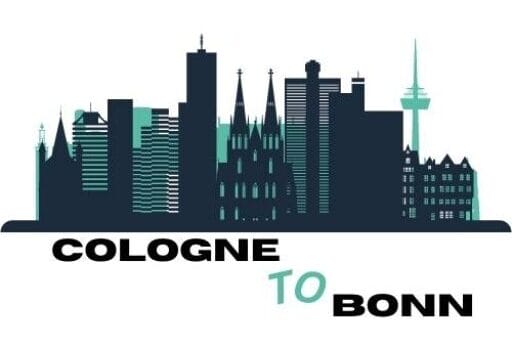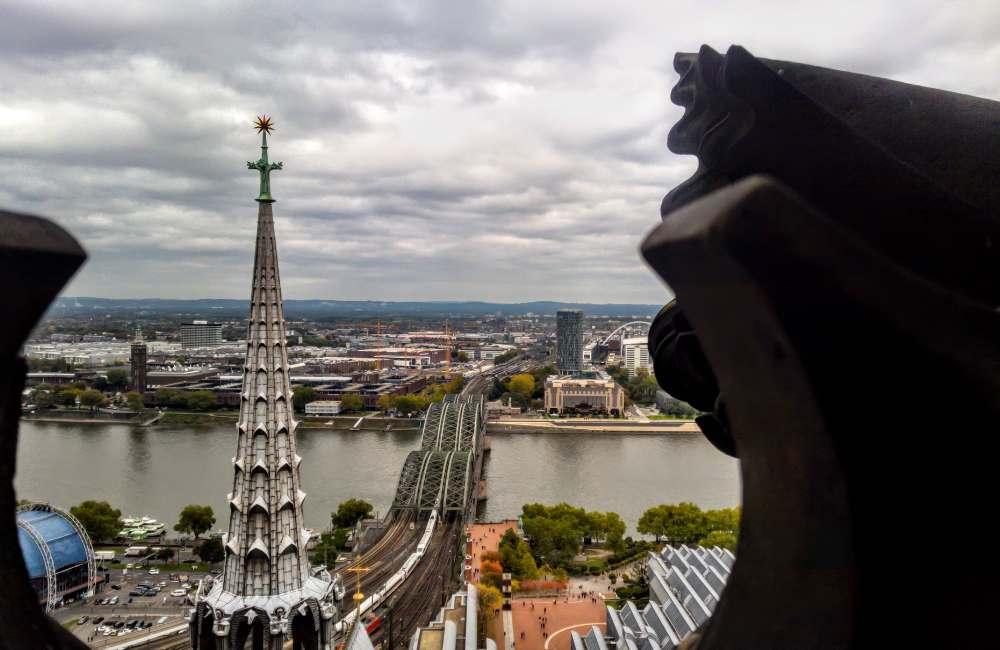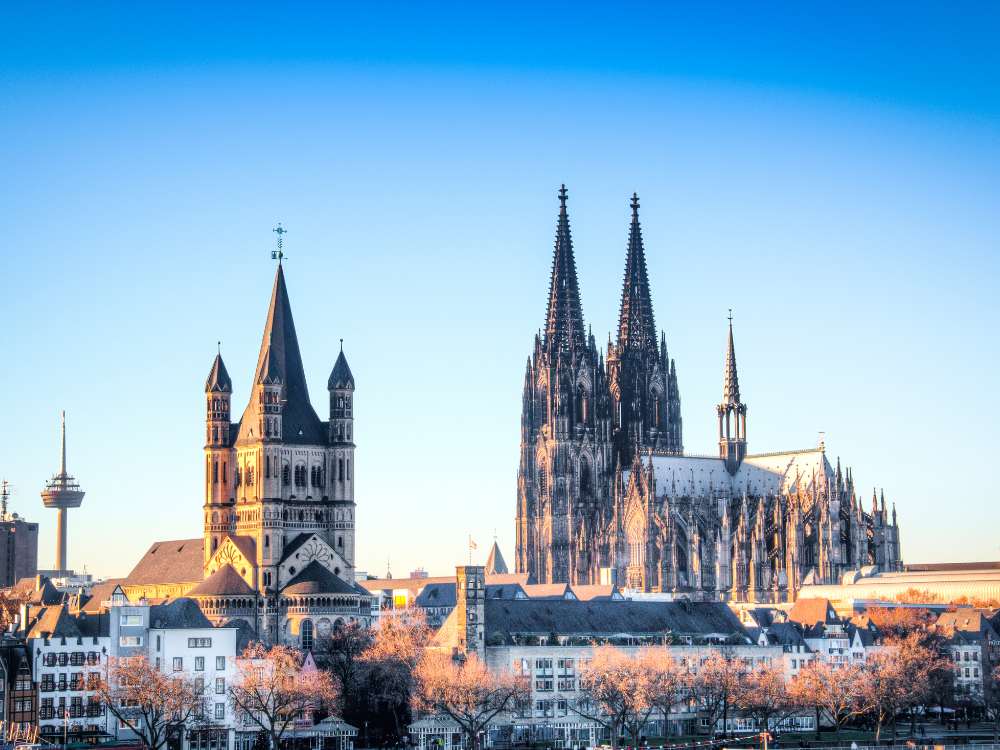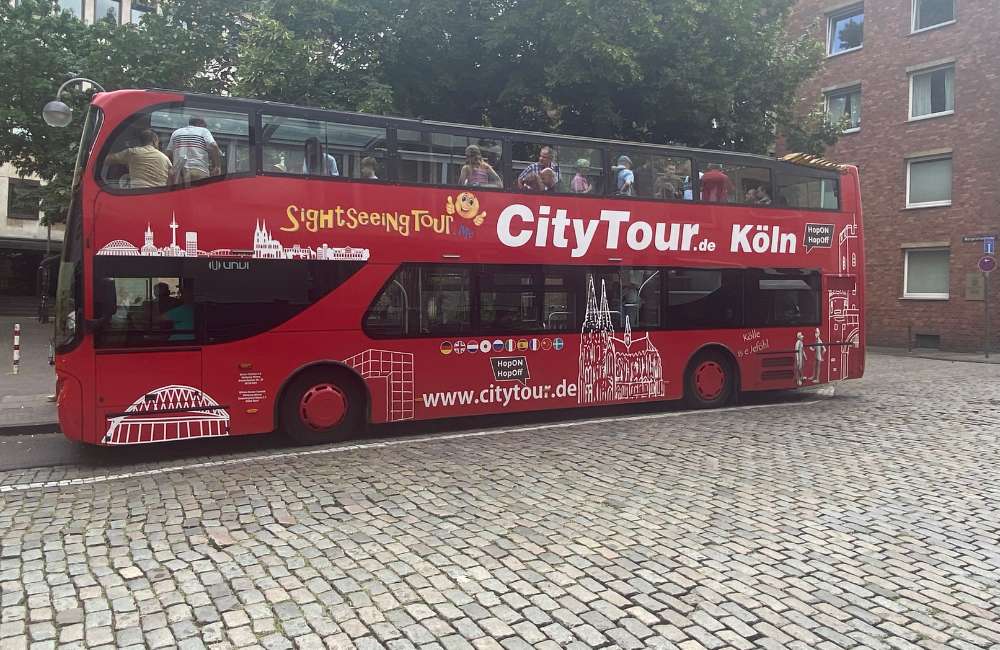Cologne Roman Ruins: Is it worth it?
ARE YOU PLANNING TO VISIT THE COLOGNE ROMAN RUINS?
You’ve landed on the right article. I’m from Cologne, and I’m excited to tell you all about it.
The ruins are like hidden treasures in our busy city. I’ve been there many times, and it always amazes me.
In this post, I’ll share the history of these ancient ruins and useful tips. We’ll find out if it’s really worth a visit.
So, get ready to explore the fascinating world of the Cologne Roman Ruins, where the past meets the present, and everyone can have an incredible time. Let’s start this adventure together!
*Cologne-to-Bonn contains affiliate links and is a member of the Amazon Services LLC Associates Program. If you make a purchase using one of these links, we may receive compensation at no extra cost to you.
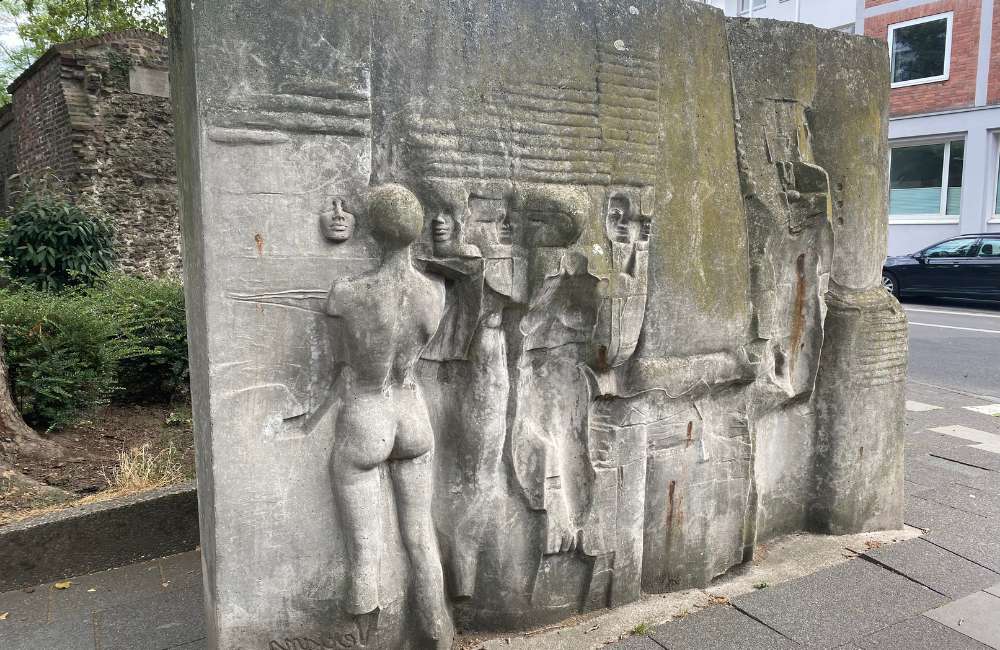
GUIDED TOUR WITH CERTIFIED GUIDE
Search for traces of the past during this guided tour of Cologne’s underground excavations with a certified guide.
COLOGNE ROMAN RUINS
The following Cologne sights are remnants from Roman times.
Roman Tower (Römerturm)
The Roman Tower (Römerturm), is a Roman watchtower adorned with mosaics located in the Cologne Altstadt-Nord (Old Town North). Believed to have been constructed around 50 AD, it stands as the best-preserved section of the ancient Roman city wall.
Situated in the city center, the Cologne Römerturm is conveniently located approximately 200 meters from the Appellhofplatz Metro station and 500 meters from the iconic Cologne Cathedral. One striking feature of the tower is its rich ornamental embellishment, achieved using various types of stones such as white limestone, red sandstone, gray trachyte, and dark graywacke.
Notably, the mosaic-like cladding differs between the lower and upper sections of the tower. The lower part extends up to a height of 4.50 meters above the ground, while the upper section adds another 1.25 meters. The upper zone appears to have been added after a period of destruction, showcasing the site’s historical evolution. The tower is crowned with crenellations.
As a remarkable relic of Roman architecture, the Roman Tower stands as a testament to Cologne’s ancient past and offers visitors a glimpse into the city’s rich historical heritage.
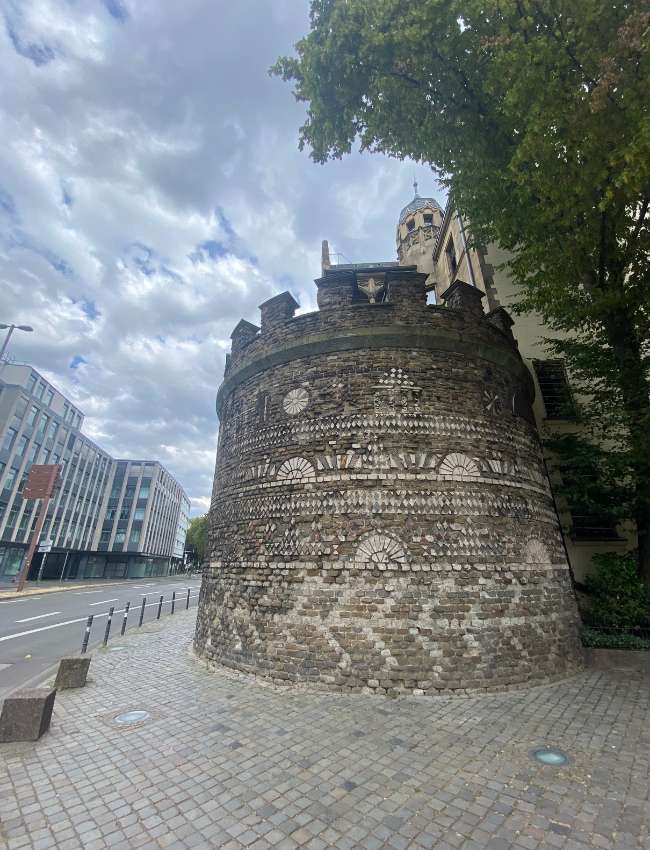
Roman City Wall
The Roman city wall in Cologne was a fortification that underwent construction over several centuries.
The initial wall was built during the late 1st to 3rd centuries to protect the Roman settlement of “Colonia Claudia Ara Agrippinensium”. In later centuries, a more extensive, semi-circular defensive line was established during the medieval period.
Over time, the city wall continued to evolve, and its final expansion occurred during the Prussian era, starting in 1815. This period saw the construction of a fortified ring. However, during the late 19th century, beginning in 1881, the medieval wall was largely dismantled, leaving only small remnants behind.
Today, people who visit Cologne can find parts of the ancient Roman city wall in different places around the city. These old walls remind us of Cologne’s interesting past and how the city grew and changed over many years with different fortifications.
When you explore these ancient remains, it’s like looking through a window into the past and seeing how Cologne has faced challenges and changed over its long and exciting history.
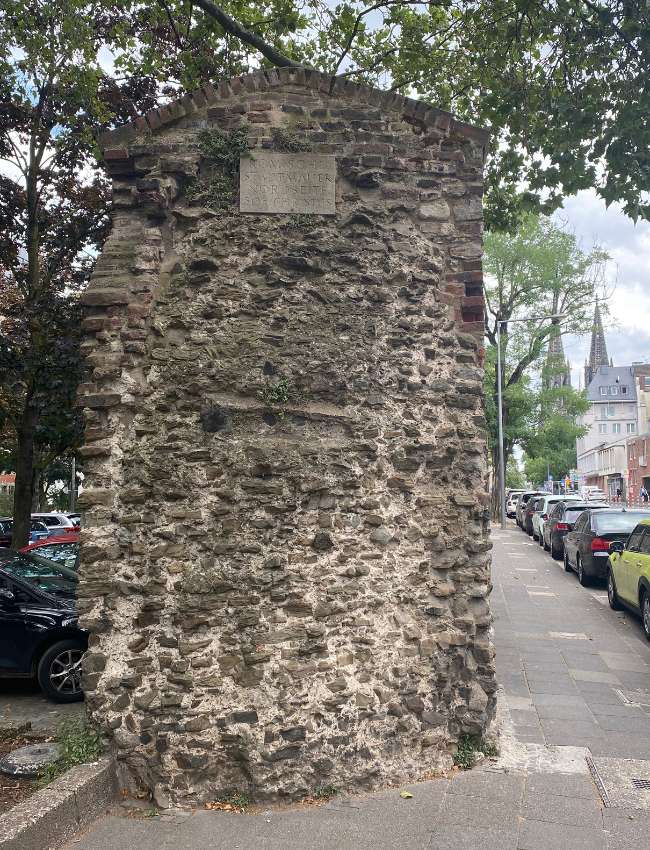
Roman Eifel Aqueduct
The Eifel Aqueduct, also known as the Roman Aqueduct or Roman Water Pipeline to Cologne, was one of the longest aqueducts in the Roman Empire. It is considered the longest aqueduct north of the Alps.
This impressive structure provided water to the ancient Roman city of Colonia Claudia Ara Agrippinensium, known as ancient Cologne. It supplied water to public fountains, baths, and private households, ensuring a reliable water supply for various needs within the city.
Today, visitors can find an original preserved section of the Eifel Aqueduct in Cologne. This historical piece serves as a reminder of the engineering marvels of the ancient Roman civilization and their ability to create water supply systems.
Exploring this well-preserved section offers a glimpse into the ingenuity of the past and the significant role that water played in shaping the development of ancient cities like Cologne.
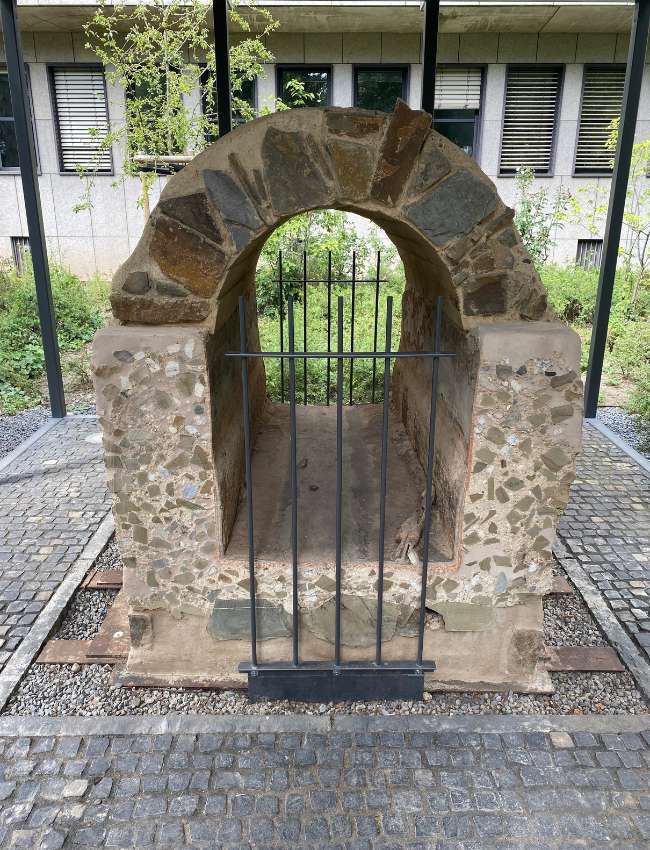
Roman Sewerage System
The Roman Sewerage System in Cologne offers a fascinating glimpse into the ancient city’s advanced engineering and sanitation practices. One of the main sewer canals ran beneath the “Große Budengasse” and the city walls and led directly to the Rhine River. It has been remarkably preserved underground.
Visitors now have the opportunity to explore approximately 150 meters of this historical channel, which lies about 8 meters beneath the ground. Access to the sewer is made possible through a newly constructed tunnel entrance located in the antechamber of the Praetorium.
During the excavations, another parallel sewer canal was discovered to the south of the site. While not as well-preserved as the first one, it still provided valuable insights into the ancient city’s waste management practices.
This second canal, partially running under the cellars along Obenmarspforten street, yielded a wealth of artifacts and historical relics.
Pfaffenpforte – North Red
The Pfaffenpforte, also known as the North Gate, was a Roman city gate situated in the Cologne Old Town North and served as one of the main entrances to the city. Its southern counterpart was the Hohe Pforte.
The exact time of its construction remains a subject of debate.
According to one view, the Roman North Gate was built during the Flavian period, between 50 and 90 AD. However, another perspective suggests that the presence of an erased inscription referring to the emperors Valerianus and Gallienus indicates a construction phase in the 3rd century.
Today, visitors can find the remains of the Pfaffenpforte in front of Cologne Cathedral, offering a glimpse into the city’s ancient past and its importance as a fortified Roman settlement. This archaeological site stands as a fascinating reminder of Cologne’s historical significance and the ancient architecture that once defined the city’s entrances.
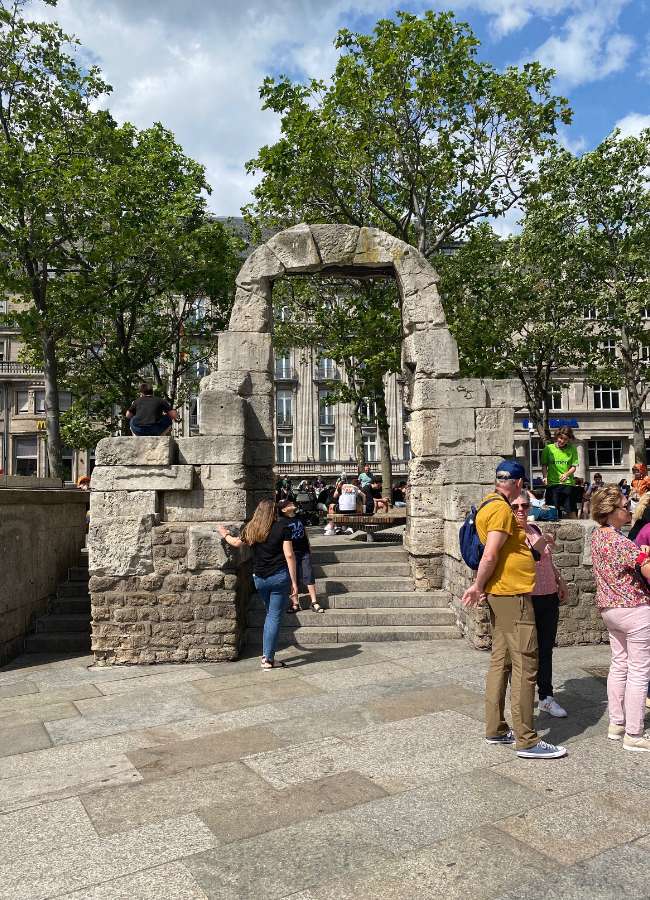
Praetorium
The Praetorium was the official residence of the governor in the capital city of Cologne. It was the most significant official building in the city and the most important Roman palace along the Rhine.
Remains of the Praetorium were discovered during excavations in 2012, and they spanned various epochs, dating back to around the time of the birth of Christ. While some parts of the complex are accessible and visible, the walls of the monumental palace from the 4th century are especially well-preserved.
During Roman times, the Praetorium served as the political and administrative center of the region, showcasing its importance in governance and public affairs. Today, this historical site stands as a testament to the city’s rich Roman heritage and attracts visitors from all around the world, offering a glimpse into the past and the grandeur of ancient architecture.
Roman Tomb
The Roman Tomb (Römergrab), located in Cologne’s Weiden district, stands as a historical site that draws visitors from around the globe.
Dating back to the 2nd century AD, this well-preserved ancient Roman burial site holds immense historical significance. It is among the few Roman tombs in Germany that have been preserved in their original form.
Conveniently accessible by public transportation, the Roman Tomb is a popular destination for both tourists and locals.
The tomb itself is a remarkable testament to Roman history, featuring a stone structure adorned with intricate carvings and engravings. Once inside, visitors can delve into the detailed decorations of the tomb, which include depictions of the deceased and their loved ones. Informative displays offer valuable insights into the life and customs of the ancient Romans, enriching the visitor experience.
If you have an interest in history and ancient cultures, a visit to the Roman Tomb in Cologne’s Weiden district comes highly recommended.
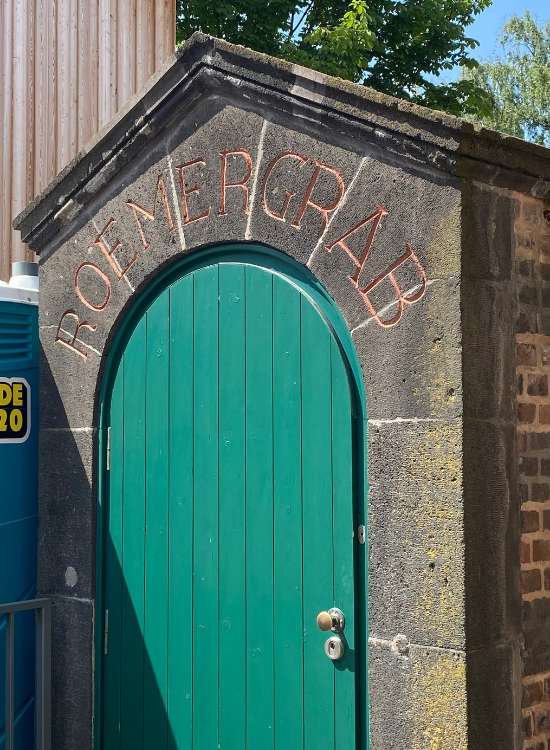
Romano-Germanic Museum
If you are interested in Roman Ruins, the Romano-Germanic Museum is a great place to visit in Cologne.
The museum was opened in 1974 and is situated on the grounds of an ancient Roman villa. Inside, there’s a collection of historical items from both the Roman era and prehistoric times.
This museum is a combination of two collections that once belonged to the City of Cologne. They were the Museum of Prehistory and Early History, and the Roman Department of the Wallraf-Richartz Museum.
When you explore the museum’s permanent exhibition, you’ll be amazed to see artifacts that are as old as 100,000 years! These items go back to the time when the first people lived in this area. Among them, you’ll find tools and pottery used by hunters and gatherers, making them some of the oldest artifacts ever discovered.
The museum also displays objects from the time when people started living in villages, farming the land, and when the Romans ruled the area.
During your visit, prepare to be fascinated by various things, such as a statue of Emperor Augustus, impressive monuments, stone arches, Roman glass, beautiful jewelry made of gold and amber, and even artifacts buried with people who lived many centuries ago.
It’s an incredible journey through time that lets you glimpse into the lives of those who came before us.
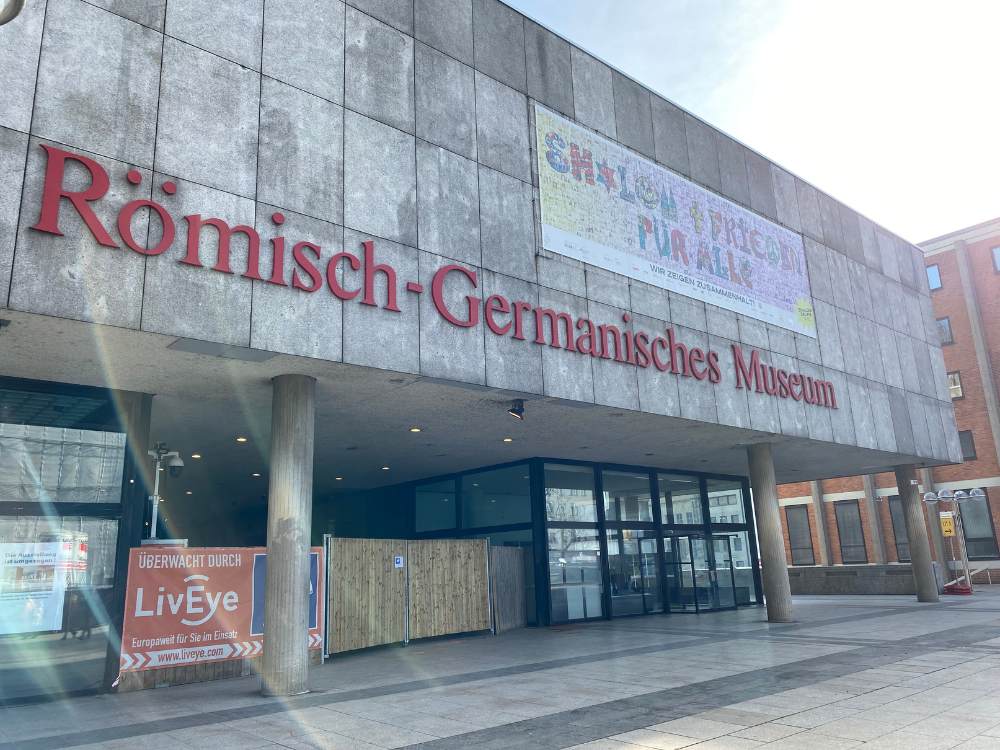
Roman Fountain
The Roman Fountain, despite its name, is not an actual remnant from the Roman era. Instead, it was constructed in 1914/15 by Franz Brantzky on Komödienstraße.
Although it is not an ancient structure, the fountain was designed to capture the spirit of Roman aesthetics and history. Over time, it has become a cherished monument near the Roman Tower and the remains of the Roman city wall.
The fountain’s design is intended to evoke elements of Roman architecture, featuring a central semi-circular wall flanked by additional walls on each side.
On the left side of the central wall stands a double column with a statue of the Roman she-wolf, adding to its Roman-inspired symbolism. Along the main fountain wall, six relief panels depict scenes from Roman life, showcasing aspects such as battles and cultural achievements.
In addition, the left fountain wall displays various portraits of individuals from Roman imperial families, symbolizing the long-lasting Roman rule along the Rhine. The flowing water, flowing down in a wide veil into the basin, adds a sense of charm to this historically inspired creation.
While not an authentic Roman relic, the Roman Fountain serves as a homage to the past, allowing visitors to appreciate the fusion of modern craftsmanship with Roman inspiration. It stands as a testament to the enduring influence of ancient history on contemporary culture and architectural design.
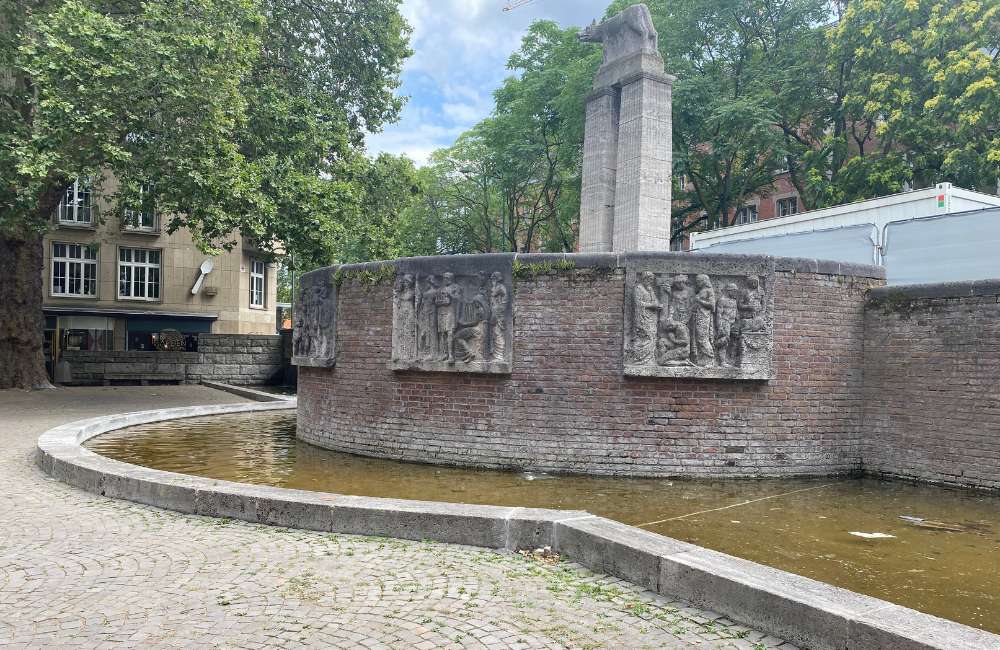
COLOGNE ROMAN RUINS: IS IT WORTH IT?
Cologne is a city full of history, and its Cologne Roman ruins offer a fantastic trip back in time. If you love ancient civilizations, you’ll cherish visiting these well-preserved relics.
Some captivating sights include the Praetorium, remains of the Roman city wall as well as a well-preserved Roman tomb. The Roman Tower also holds centuries of history.
Exploring these ancient sites in Cologne feels like unwrapping an exciting story from the past. You can almost imagine how Romans lived here, leaving their mark on the city.
If you’re curious about history, you’ll have an unforgettable experience exploring these Roman ruins. It’s like a time travel adventure, connecting you with Cologne’s impressive Roman past, still present in the city today.
FREQUENTLY ASKED QUESTIONS
Are there Roman ruins in Germany?
Yes, there are Roman ruins in Germany. During the Roman Empire, parts of what is now modern-day Germany were once part of the Roman provinces of Germania Superior and Germania Inferior. As a result, several Roman settlements and structures were established in these regions.
Some notable Roman ruins in Germany include:
- Porta Nigra (Black Gate) in Trier: It is a well-preserved Roman city gate and one of the most impressive Roman structures in Germany.
- Roman Colonia Ulpia Traiana in Xanten: This archaeological park contains the remains of a Roman city, including a temple, an amphitheater, and a Roman bathhouse.
- Roman Villa Borg in Perl-Borg: A reconstructed Roman villa showcasing life in a wealthy Roman household.
- Roman Limes: A series of fortified walls and watchtowers built by the Romans to mark the boundary of the Roman Empire in Germany.
- Roman Baths in Baden-Baden: Ruins of Roman baths and thermal springs used for relaxation and healing.
These Roman ruins offer a glimpse into the ancient history of Germany and the lasting influence of the Roman civilization on the region. They attract both history enthusiasts and tourists interested in exploring the rich cultural heritage of the area.
What is the oldest Roman city in Germany?
The oldest Roman city in Germany is Trier (formerly known as Augusta Treverorum during Roman times). Trier is located in the southwestern part of Germany, near the border with Luxembourg. It was founded by the Celts in the late 4th century BCE but later became a significant Roman settlement.
During the reign of Emperor Augustus, around 16 BCE, Trier was established as a Roman colony and grew into an essential administrative and cultural center in the region. It served as the capital of the Roman province of Gallia Belgica and later became the seat of the imperial governor for several Roman provinces.
Trier boasts an impressive collection of well-preserved Roman structures, including the Porta Nigra (a city gate), the Imperial Baths, the Amphitheatre, and the Basilica of Constantine, which is considered the largest surviving Roman hall of its kind. The city’s rich Roman heritage earned it recognition as a UNESCO World Heritage Site.
Was Cologne in the Holy Roman Empire?
Yes, Cologne (Köln) was an important city within the Holy Roman Empire.
The Holy Roman Empire was a complex and decentralized political entity that existed from the early Middle Ages until the early 19th century. It was not a centralized empire like the Roman Empire of antiquity, but rather a loosely organized confederation of territories, kingdoms, and city-states under the nominal authority of the Holy Roman Emperor.
Cologne, situated in the western part of modern-day Germany, played a significant role in the Holy Roman Empire. It was one of the major Free Imperial Cities, which were independent cities directly under the authority of the Emperor, rather than being governed by local nobles or bishops.
As a Free Imperial City, Cologne enjoyed a high degree of autonomy and had the right to govern itself and engage in trade and commerce without interference from feudal lords.
Is Cologne an old city?
Yes, Cologne (Köln) is an old city with a history that spans over two millennia. It is one of the oldest cities in Germany and has a rich and diverse historical background.
The origins of Cologne can be traced back to the Roman period when it was established as a Roman colony in the first century BCE under the name “Colonia Claudia Ara Agrippinensium”. As a Roman settlement, Cologne flourished as a center of trade, administration, and culture.
After the decline of the Western Roman Empire, Cologne remained an important city throughout the medieval period. It was a prominent ecclesiastical center, with the Cologne Cathedral (Kölner Dom) being one of its most iconic landmarks. Construction of the cathedral began in the 13th century and continued for several centuries, making it a masterpiece of Gothic architecture.
Over the centuries, Cologne continued to grow and evolve, experiencing periods of prosperity and challenges. It played a significant role in the Hanseatic League, a medieval trading network, and later became a leading industrial and cultural center in Germany.
Today, Cologne is a vibrant and modern city that still retains its historical charm. Its long and eventful history is evident in its architecture, museums, and cultural landmarks, making it a popular destination for tourists and history enthusiasts alike.
- 23 Best Things to Eat at Cologne Christmas Market [Locals Pick] - 18. October 2023
- 15 Things to Do in Cologne at Christmas - 11. October 2023
- 20 Unusual Things to do in Cologne Germany - 6. September 2023
